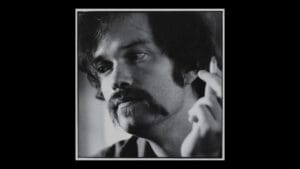John Laird Abercrombie was born on December 16, 1944, in Port Chester, New York. He was an American jazz guitarist whose professional career as an improviser spanned over five decades. Known for his innovative style and deep jazz roots, Abercrombie continually expanded the boundaries of modern jazz guitar through his recordings, collaborations, and live performances.
Early Influences
Abercrombie’s musical foundation was shaped by a blend of bebop, modal jazz, and the emerging fusion movement of the late 1960s. He studied at Berklee College of Music, where he absorbed the harmonic sophistication of players like Jim Hall and Wes Montgomery, while also exploring the electric possibilities introduced by John McLaughlin and Larry Coryell.
His early work with ECM Records and collaborations with artists such as Charles Lloyd, Kenny Wheeler, and Ralph Towner helped refine his lyrical sensibility and introduced him to ambient and chamber jazz textures. Abercrombie’s influences were less about genre boundaries and more about emotional depth, space, and melodic improvisation.
Career Milestones
Breakthrough Recordings
Abercrombie’s breakout moment came with Timeless (1975), his debut as a leader on ECM Records, featuring Jan Hammer and Jack DeJohnette. The album blended jazz fusion with ambient textures and established his lyrical, genre-defying voice.
Duo & Ensemble Work
His duo albums with Ralph Towner—Sargasso Sea (1976) and Five Years Later (1981)—explored intricate acoustic interplay. His work with Gateway, featuring Dave Holland and Jack DeJohnette, pushed jazz fusion into new territory. Gateway (1976), the first of several trio albums with Dave Holland and DeJohnette, further cemented his reputation as a fearless improviser.
Signature Albums
Notable albums like Timeless, Gateway, and 39 Steps reflect his evolution as a composer and improviser. Abercrombie’s career was marked by a willingness to challenge convention and explore new sonic landscapes.
Playing Style & Technique
Abercrombie’s playing was defined by lyrical phrasing, harmonic sophistication, and a deep sense of space. He often favored subtle textures over technical bravado, using delay, reverb, and volume swells to create ambient layers. His improvisations were melodic and searching, often unfolding slowly with emotional depth and clarity.
He blended jazz fusion, free jazz, and avant-garde approaches into a fluid, exploratory style. Compositions like “Parable,” “Ghost Dance,” and “Evensong” showcased his ability to balance abstraction with lyricism, always prioritizing musical conversation over flash.
Signature Gear & Tone
Abercrombie frequently played hollow-body guitars, including the Gibson ES-175 and custom-built instruments suited for jazz nuance. His tone was warm, rounded, and expressive—often shaped by minimal effects and a sensitive touch. He used delay and reverb sparingly to enhance atmosphere, never overpowering the natural voice of the guitar.
Legacy
John Abercrombie’s legacy is defined by his role as a boundary-pushing guitarist and thoughtful mentor. He helped redefine the expressive potential of jazz guitar, favoring subtlety, lyricism, and harmonic sophistication over technical bravado.
He was also a dedicated educator, inspiring countless students through master classes and mentorship. The John Abercrombie Jazz Scholarship Fund continues to honor his memory by supporting emerging talent in the jazz community.
Final Reflection
John Abercrombie didn’t just play jazz guitar—he reshaped it. His recordings invite listeners into a world of quiet intensity, melodic exploration, and harmonic depth. Whether in duo settings or full ensembles, Abercrombie’s voice was unmistakable: introspective, searching, and deeply human.
His legacy lives on in the players he inspired and the recordings that continue to challenge and comfort, all rooted in his own clear vision of his role in the history of jazz:
“I’d like people to perceive me as having a direct connection to the history of jazz guitar, while expanding some musical boundaries.” — John Abercrombie
Essential Listening
To appreciate John Abercrombie’s guitar voice, explore both his studio focus and live spontaneity. These recordings reveal his subtle touch, inventive phrasing, and fearless approach to improvisation.
Live Performances
Homecoming John Abercrombie & Gateway: Open Conversation at Lugano Filmed live at the Lugano Jazz Festival, “Homecoming” captures John Abercrombie in a setting that feels...
Homecoming John Abercrombie & Gateway: Open Conversation at Lugano Filmed live at the Lugano Jazz...
Studio Recordings
This trio session is a masterclass in ensemble balance. Hammer’s synthesizer is essential, providing church-like warmth. DeJohnette contributes in shimmering, coloristic layers, driving momentum without...
This trio session is a masterclass in ensemble balance. Hammer’s synthesizer is essential, providing church-like...


